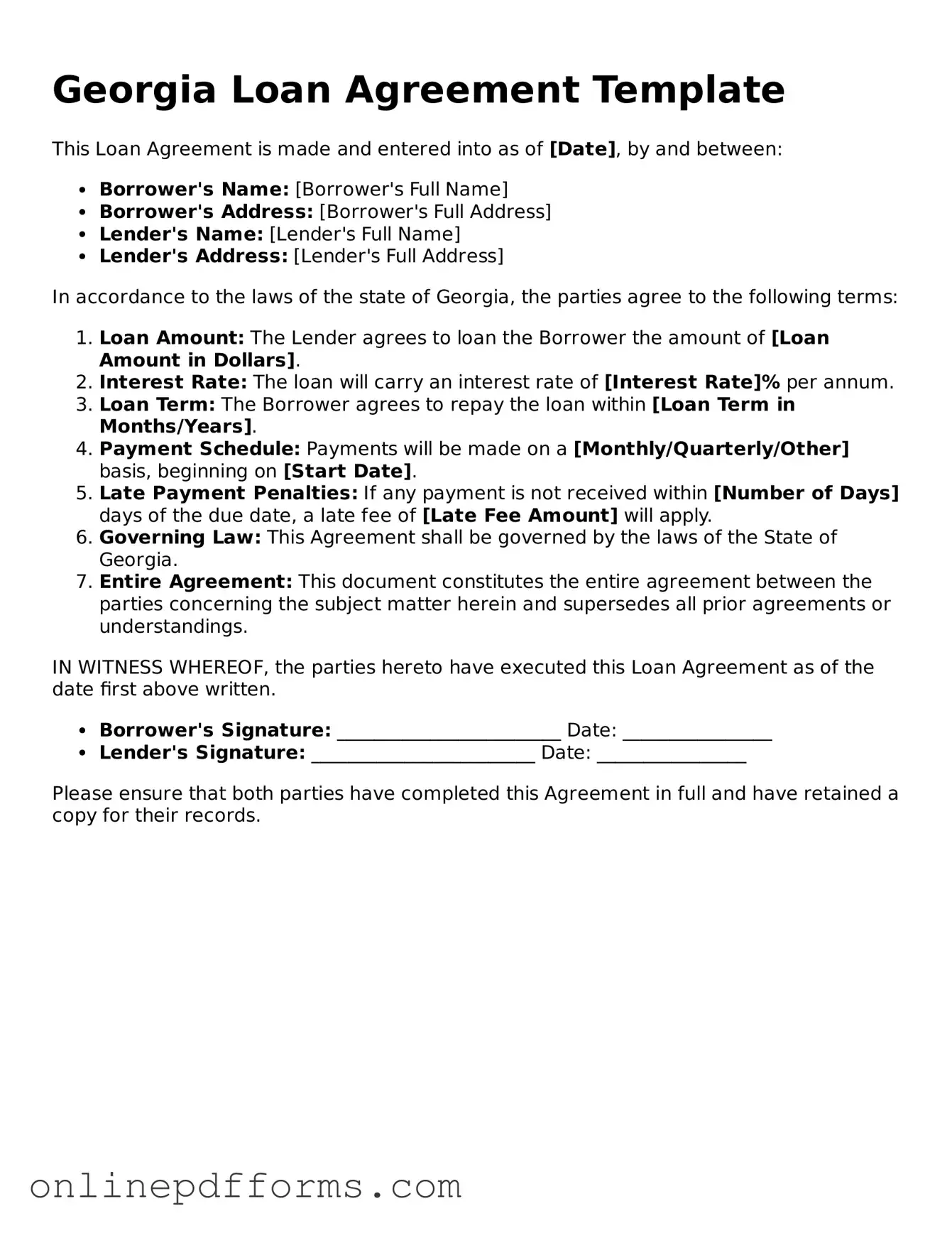The Georgia Loan Agreement form shares similarities with the Promissory Note. Both documents outline the terms under which a borrower agrees to repay a lender. A Promissory Note is typically more straightforward, focusing primarily on the borrower's promise to repay the loan amount, along with any interest. In contrast, the Georgia Loan Agreement often includes additional details such as repayment schedules, default conditions, and the rights of both parties, making it more comprehensive in nature.
Another document that resembles the Georgia Loan Agreement is the Mortgage Agreement. While the Loan Agreement outlines the terms of the loan itself, the Mortgage Agreement secures the loan with collateral—usually the property being financed. This means that if the borrower defaults, the lender has the right to take possession of the property. Both documents work together to ensure the lender's interests are protected while providing the borrower with necessary financing.
The Security Agreement is also akin to the Georgia Loan Agreement. This document specifies the collateral that secures a loan. In situations where personal property is used as collateral, the Security Agreement details what items are at stake. While the Georgia Loan Agreement may reference the collateral, the Security Agreement goes into greater detail about the rights and obligations concerning that collateral, ensuring both parties understand their responsibilities.
Similar to the Georgia Loan Agreement is the Loan Disclosure Statement. This document is designed to inform borrowers about the terms of the loan, including interest rates, fees, and the total cost of borrowing. While the Loan Agreement formalizes the terms, the Disclosure Statement serves as a summary that helps borrowers make informed decisions. It is an essential tool for transparency and consumer protection.
The Credit Agreement is another document that parallels the Georgia Loan Agreement. Typically used in business financing, a Credit Agreement outlines the terms under which a lender provides credit to a borrower. It includes details such as credit limits, interest rates, and repayment terms. Like the Georgia Loan Agreement, it establishes a legal framework for the lending relationship, ensuring both parties are aware of their obligations.
The Installment Agreement bears resemblance to the Georgia Loan Agreement as well. This document outlines the repayment terms for a loan that is paid back in installments over time. It specifies the amount of each payment, the frequency of payments, and the total duration of the loan. Both agreements aim to clarify the repayment process, although the Installment Agreement is specifically focused on the payment structure.
Understanding various legal documents is crucial in real estate transactions, and one such document is the Texas Quitclaim Deed. This form facilitates the transfer of property without warranty, making it especially relevant for situations involving unclear titles or transfers between acquaintances. Adequate knowledge of the Quitclaim Deed ensures a seamless transfer of ownership; for more information, visit https://pdftemplates.info/texas-quitclaim-deed-form/.
The Loan Modification Agreement also shares characteristics with the Georgia Loan Agreement. This document is used when the terms of an existing loan need to be changed, such as adjusting the interest rate or extending the repayment period. Like the Georgia Loan Agreement, it requires mutual consent from both parties and formalizes the new terms, ensuring that both the lender and borrower are clear on the revised conditions.
The Forbearance Agreement is another document that can be compared to the Georgia Loan Agreement. This agreement is used when a lender allows a borrower to temporarily stop making payments or to make reduced payments. It outlines the terms of the forbearance period, including how the missed payments will be handled afterward. Both agreements aim to provide a clear understanding of the borrower’s obligations, especially during challenging financial times.
Lastly, the Lease Agreement can be likened to the Georgia Loan Agreement in certain contexts, particularly when financing is involved in leasing property. A Lease Agreement outlines the terms under which one party rents property from another. It includes payment terms, duration, and responsibilities. When a loan is taken to finance a lease, the Loan Agreement would detail the financing terms, while the Lease Agreement governs the rental terms, creating a comprehensive understanding of both financial and occupancy responsibilities.
